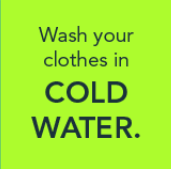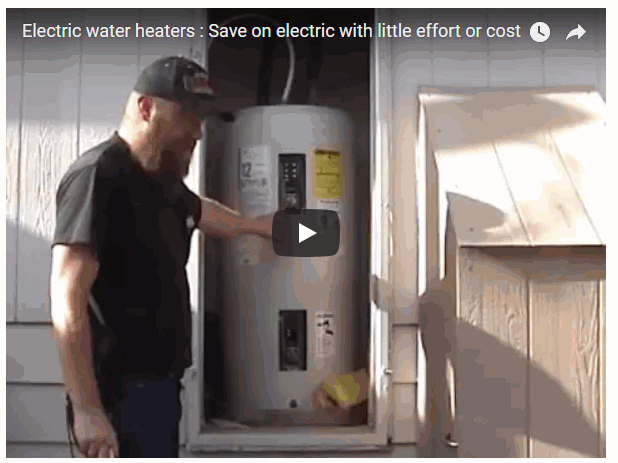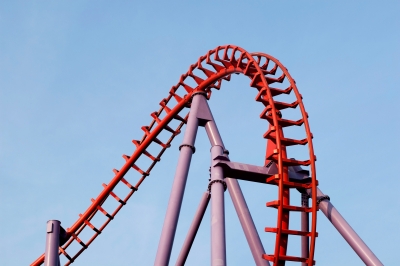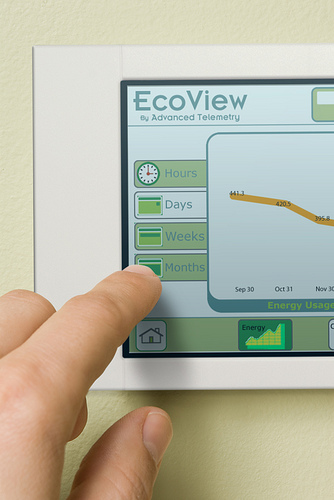According to the U.S. Department of Energy “Water heaters account for nearly 17 percent of a home’s energy use, consuming more energy than all other household appliances combined.” They also tell us that “the average U.S. household spends $400 – $600 per year” just heating water. Most Americans still have the conventional type of water heater. This type of unit stores water and heats it whenever the temperature falls below a preset level so that it will be hot when you need it. So, when the stored water cools, the tank’s heater element turns on and warms up the water again. This cycle continues (even if no hot water is used) which leads to a waste of energy: resulting in a high electricity (or gas) bill. This cooling can be the result of either heat loss through the tank (or pipes) or due to cold water being introduced to the bottom of the tank when you use hot water from the top.
Tankless Water Heaters
Tankless water heaters are more energy efficient than conventional units since they don’t store the water. They simply heat it instantly when you turn on the tap. So you might want to consider buying those when it comes time to replace your old storage type of water heater. However, conversion can be difficult and tankless units are generally more pricey initially than conventional units. So here are some tips on how to save energy costs with conventional storage type water heaters.
Lower the Tank’s Thermostat.
For every 10 degrees that you lower your water heater’s thermostat, you will cut 3-5% of water heater electricity expenses on your monthly bill. Some water heater units are preset as high as 140 degrees; temperature this high has a high chance of scalding. If this is the case, then you can easily set it lower to 120 degrees. 120 degrees is generally enough for your hot water needs. See this video for some great tips on further adjustments you can make to save even more.
Reduce Hot Water Usage.
You may be wasting money and energy due to hot water being used. Remember every time you turn on the hot faucet you are introducing cold water into the tank which then has to be brought up to temperature. 
If you are running a bath you don’t need to run the water hot first since you will probably be adding cold water anyway why not just turn on the hot tap and use that water as the cold water you would have added later? Wash your clothes in cold water whenever possible.
Insulate the Exposed Hot-Water Pipes.
Insulating your hot water pipes can give you a 2-4 degrees of warm water as it travels in the pipes. With this, you don’t have to wait for too long for the water to heat up thus, helping you save energy, water and money.
Insulate your Water Heater
Adding extra insulation to your water heater can help reduce the amount of heat lost while it is just sitting there. Just be careful when insulating a gas water heater that you don’t cover necessary vents and access covers. You can get Hot Water Tank Heater Insulation Jackets specifically made for your water heater.
Size your Tank Properly
The larger your tank the more water that is stored and the more opportunity for heat loss. Thus you don’t want a tank that is too large. If you have a very large family consider installing two smaller tanks connected in “series” set the first tank at a lower temperature so it simply “preheats” the water before it gets to the final heater. This way the first tank loses less heat when not in use and it prevents cold water from mixing with the final tank so you will actually have more hot water at a lower maintenance cost.
Drain the Sediment Build-up.
It is natural that hot water tanks build up sediment due to continued usage. However, this debris reduces the efficiency of your water heater and can cause early system failure. One simple action to answer this is by flushing the tank. Simply hook a hose to the bottom of your water heater and flush out a few quarts every month. You don’t need to shut off the water inflow to do this. If you ever do shut off the inflow, be sure to turn off the electricity to the unit as well. A dry electrical heating unit will burn out in seconds if energized. They must always be submerged in water when in use.
You might also like:
- Big Family? Top Strategies for Saving on Utilities
- Renting an Older Home? 4 Utility Cost-Saving Updates
- Is Your House Wasting Energy & Costing You More Money
- Saving Money in the Laundry Room?
- Energy Finances 101: How to Decrease Your Bills By 10 Percent or More!



